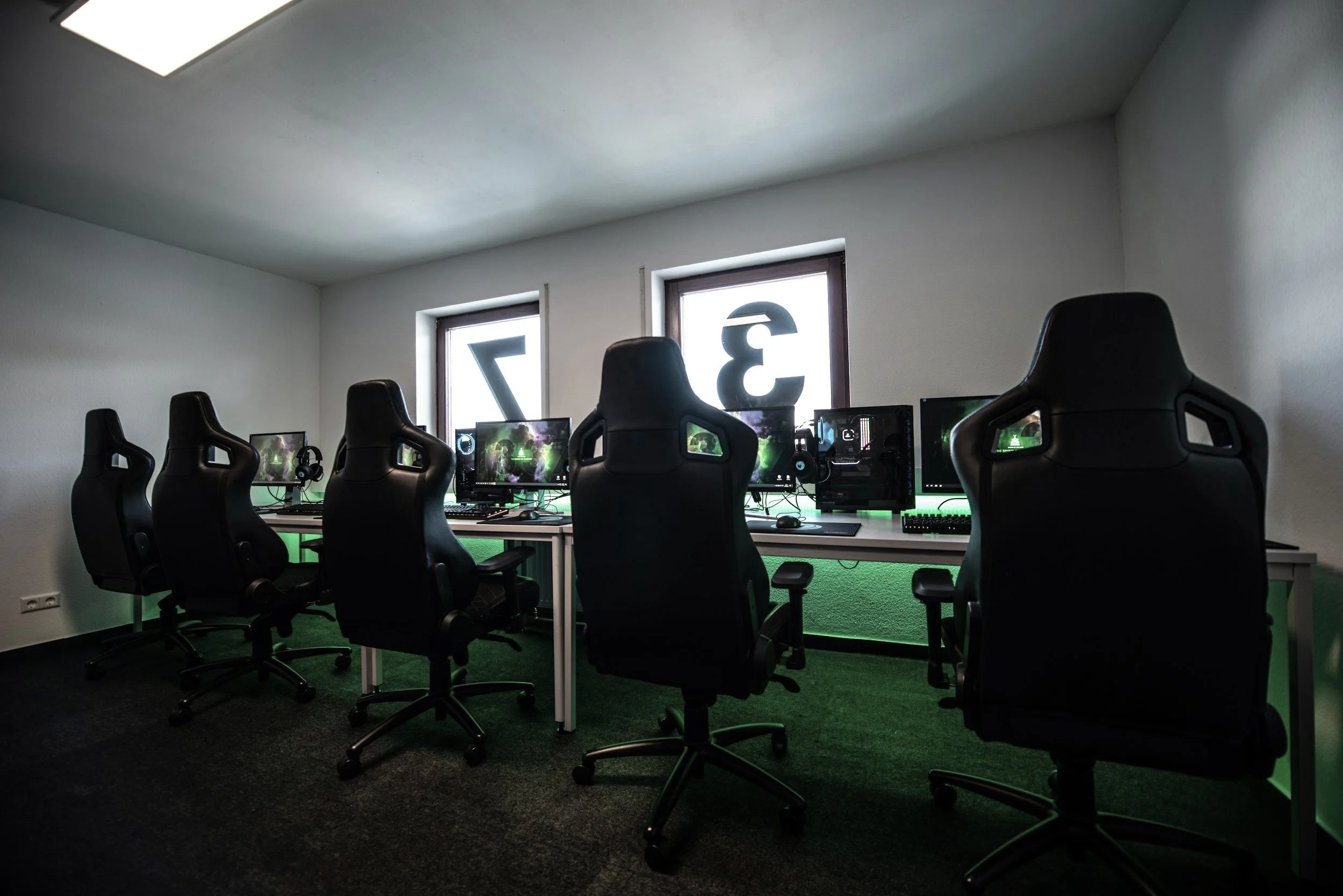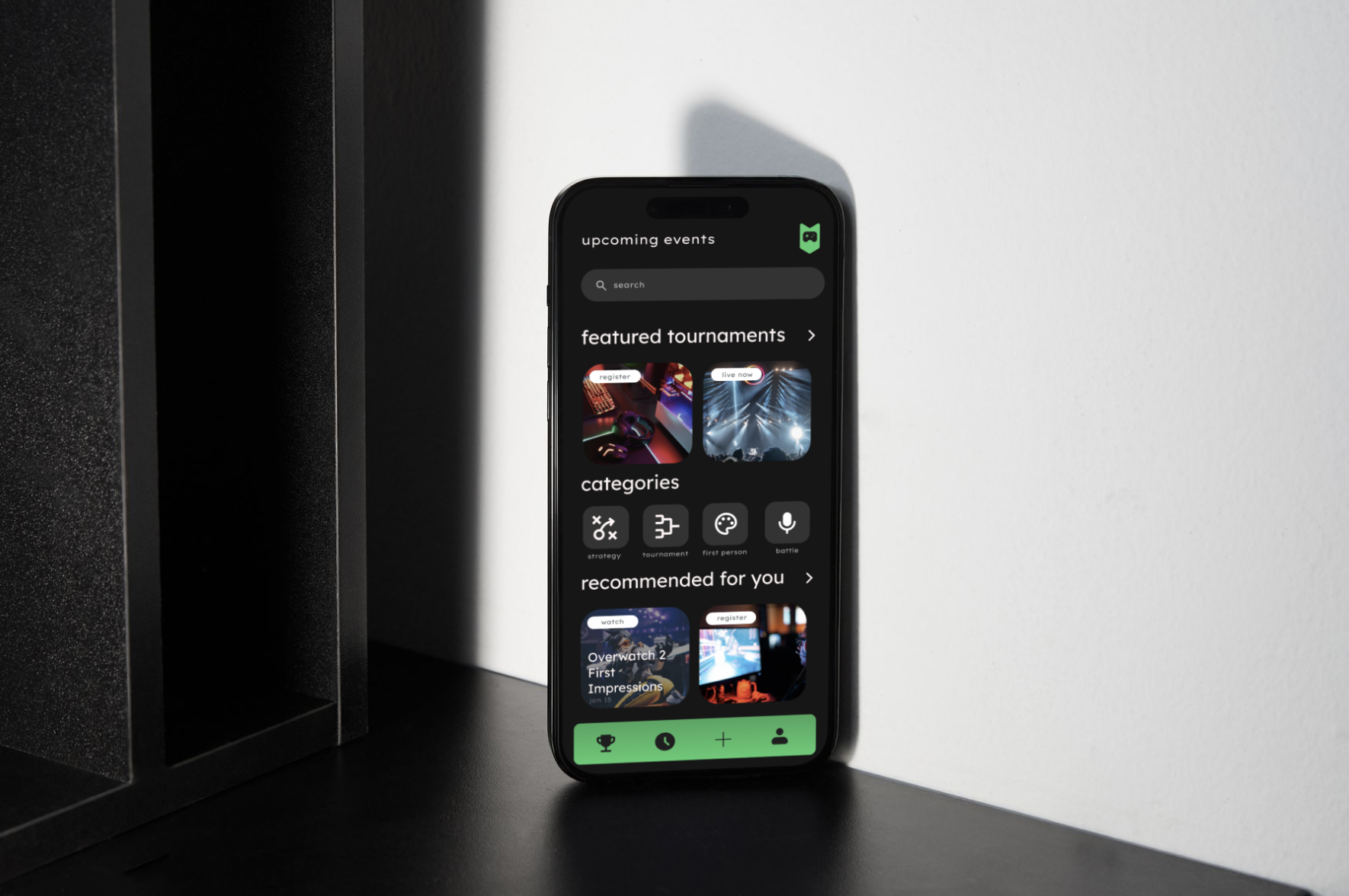GameTime
Addressing Safety and Structure in the Booming Esports World for Young Gamers
This project began during my internship with GNF Unlimited Inc., where I was tasked with wireframing three screens for an esports scheduling app: a welcome page, a schedule, and an events listing page. Though the client pivoted direction before the wireframes were completed, I saw an opportunity to take the concept further, under approval from my supervisor. I chose to continue the development of an esports scheduling app, but with a unique focus on a user base that needed it most: children.
Many gaming and chat platforms offer little to no regulation or safety features tailored for younger users, leaving them vulnerable to online risks. In designing this app, I wanted to address these challenges by prioritizing safety while enriching the gaming experience. How could I create an environment where kids could enjoy esports and gaming with structure and accountability, all while ensuring their security?
Measuring Up: Comparing the Prototype to Existing Esports Tools and Aligning with Gaming Culture and Preferences
Instead of starting with a traditional research phase, I built a prototype first and used it as a tool to collect real-world feedback from my research participants—young gamers.
My reasoning for this unconventional approach was rooted in understanding how intuitive the app could be in the hands of its target users. Younger gamers, especially those involved in esports, tend to have a high level of familiarity with technology, gaming interfaces, and communication platforms like Discord, Twitch, and in-game messaging systems. They are accustomed to navigating complex systems with ease and often have an innate understanding of how digital interfaces work. With this in mind, I wanted to test how the existing prototype measured up against the platforms they currently use and see how they interacted with it in real time.
By putting the prototype in front of actual young users, I could observe firsthand how they navigated the app, which features they gravitated toward, and where they faced challenges. This hands-on feedback loop allowed me to rapidly iterate on the design, making refinements based on their interactions. The process was much more organic and gave me invaluable insights into what young users actually wanted and needed from an esports scheduling tool—beyond theoretical research or assumptions.
Choosing Research Participants: Bridging the Gap Between Youth and Experience
To conduct my research, I followed the Institutional Review Board (IRB) rules and regulations through Michigan State University, using their SONA study platform to recruit participants. This allowed me to ensure the process was ethical and in compliance with university protocols, while also connecting with a group of potential participants who were both accessible and relevant to the study.
I specifically limited the age bracket to 18-21, focusing on individuals who are legal adults but still within a developmental stage that closely mirrors the experience of younger gamers. This age range, which spans from late high school seniors to early college students, was crucial because these participants were either actively engaged with esports or had recently been part of the younger demographic that heavily influenced the rise of online gaming platforms, communication tools, and esports culture.
I saw this group as a unique blend of perspectives—they are old enough to offer insights grounded in real-life experience, but still close enough to their teenage years to recall how newer platforms like Discord, Twitch, and in-game messaging systems evolved alongside their gaming habits. This provided me with valuable feedback that could help shape the app’s design for an even younger audience—teenagers who are increasingly immersed in the digital esports space.
In addition to adhering to university protocol by interviewing legal adults, I also recognized that these participants had lived through the rapid evolution of gaming platforms and online culture, making them ideally suited to offer reflections on how esports tools and interfaces have shaped their experience over time. Their insights were not just rooted in what works now, but also what they remember from their earlier years of gaming—allowing me to gain a more nuanced understanding of how younger users interact with esports technologies.
Bringing the Prototype to the Table: Functionality Meets Design
The primary function of this prototype is to streamline the scheduling of online gaming events through event discovery and calendar integration.
To ensure the design would resonate with the target audience, I used a green and black minimalist theme. These colors and design choices are commonly associated with gaming aesthetics and evoke the familiar look and feel of many well-established gaming platforms.
The three main screen ideas provided by my internship—browsing events, a calendar, and event details—served as the foundation for the prototype.
Features
-
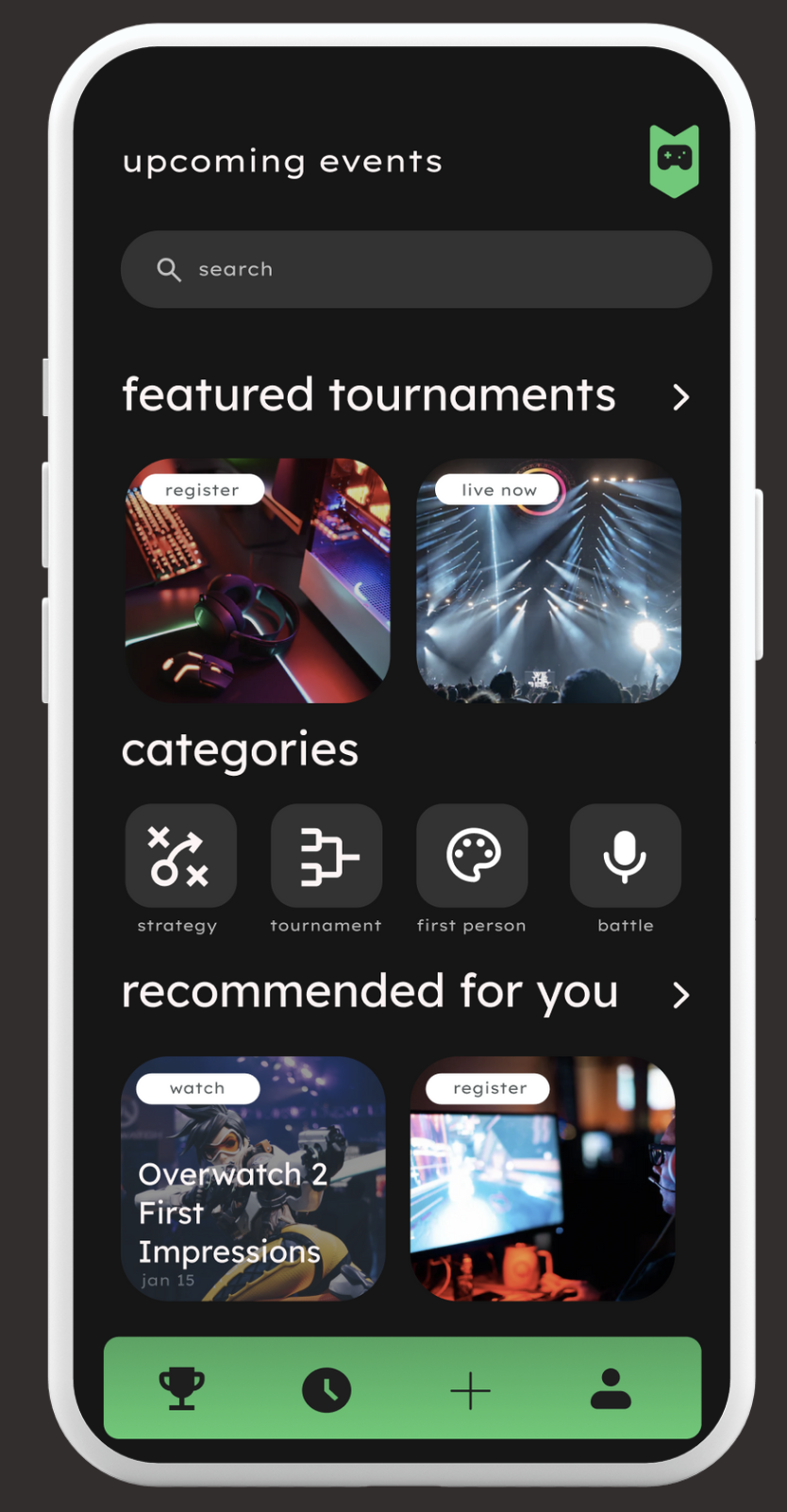
Landing Page
A welcoming, intuitive entry point to the app, guiding users to key actions like browsing events or managing their calendar.
-
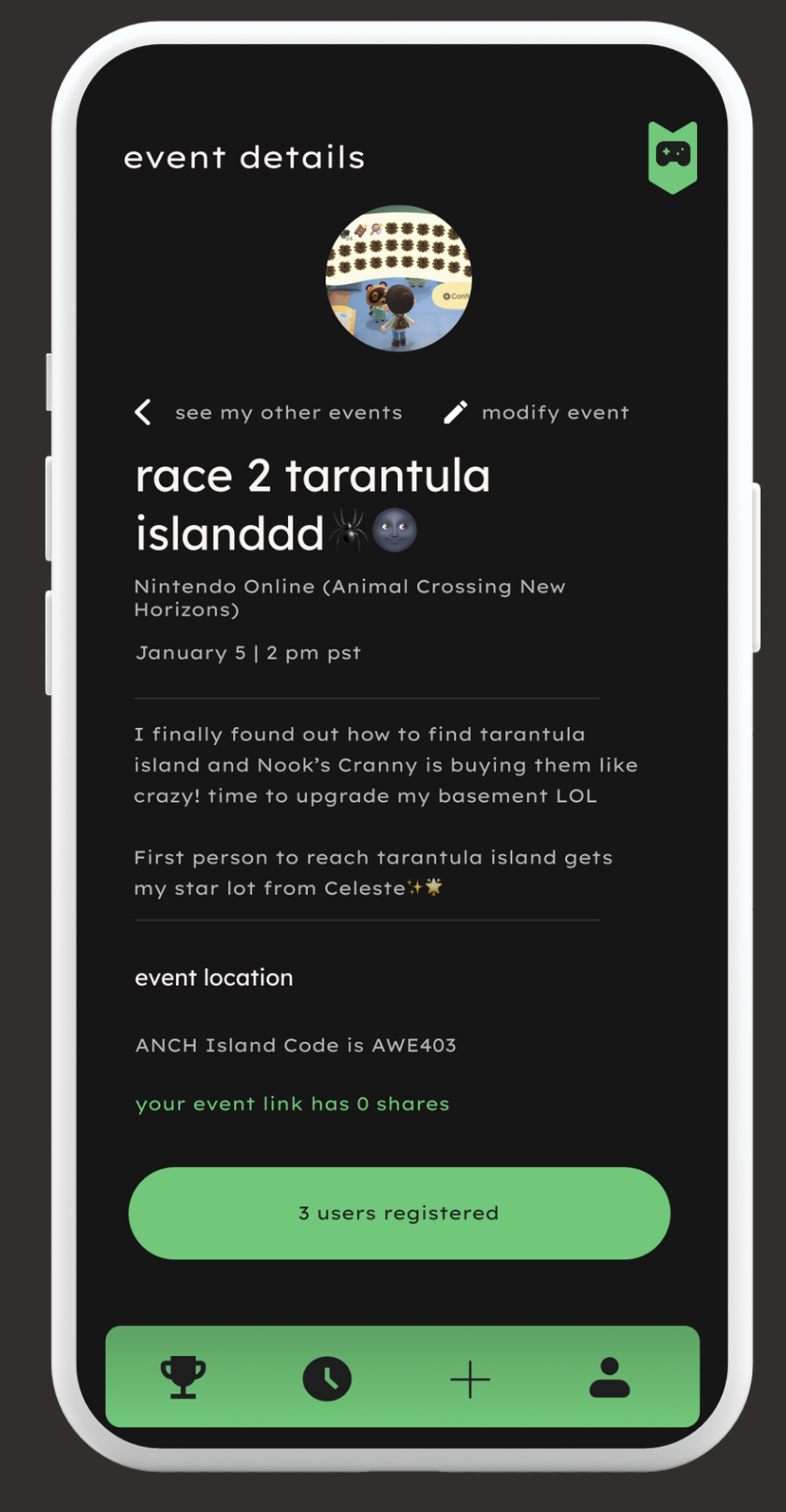
Event Creation
Empowering users to create and host their own gaming events, adding a level of ownership and flexibility.
-

Profile with Gaming Statistics
Allowing users to track their progress, performance, and engagement within the gaming community, reinforcing the competitive nature of esports.
-
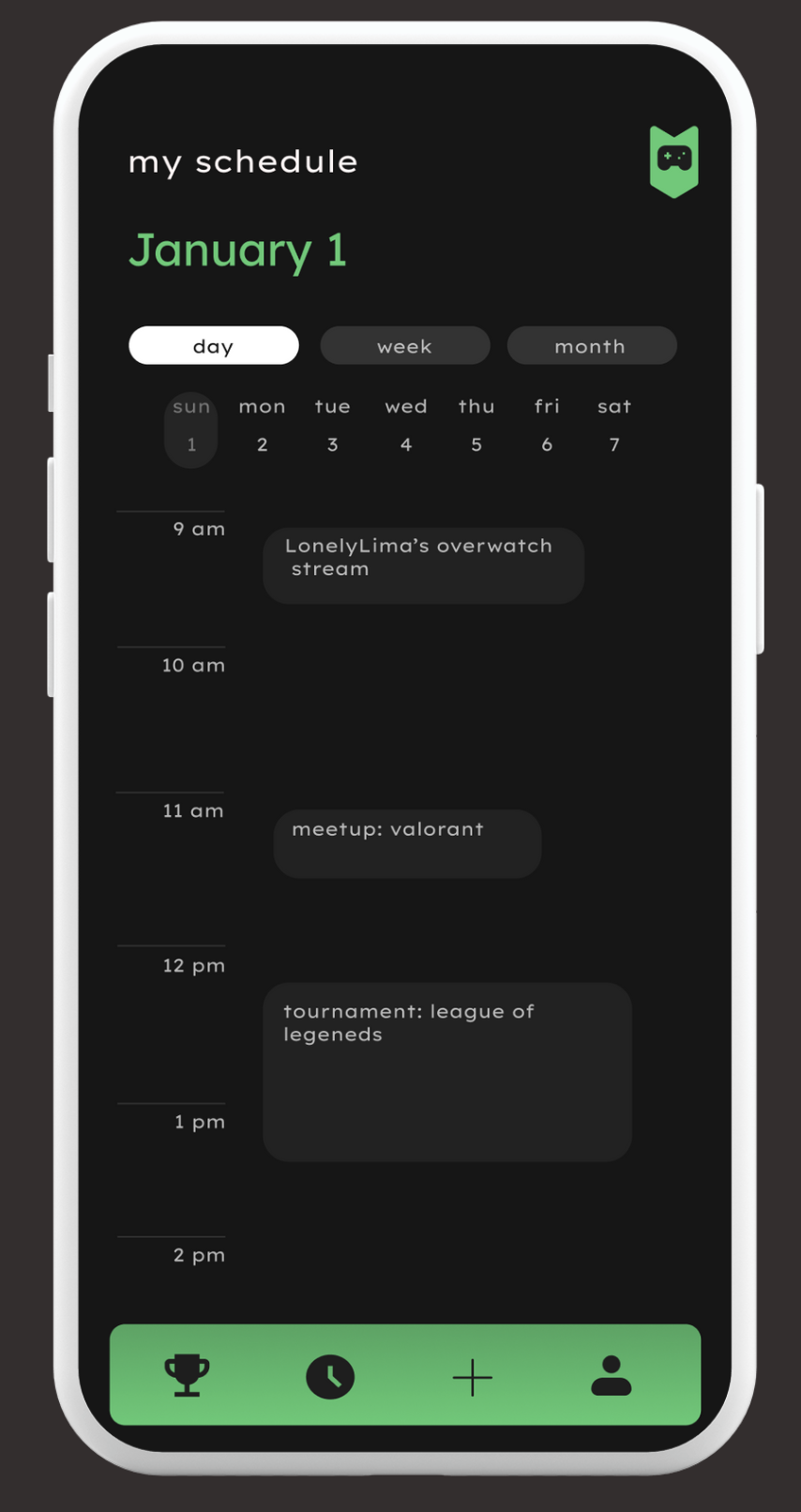
Multi-View Calendar
Offering different calendar views (day, week, month) to accommodate various preferences, making event scheduling more flexible and personalized.
-
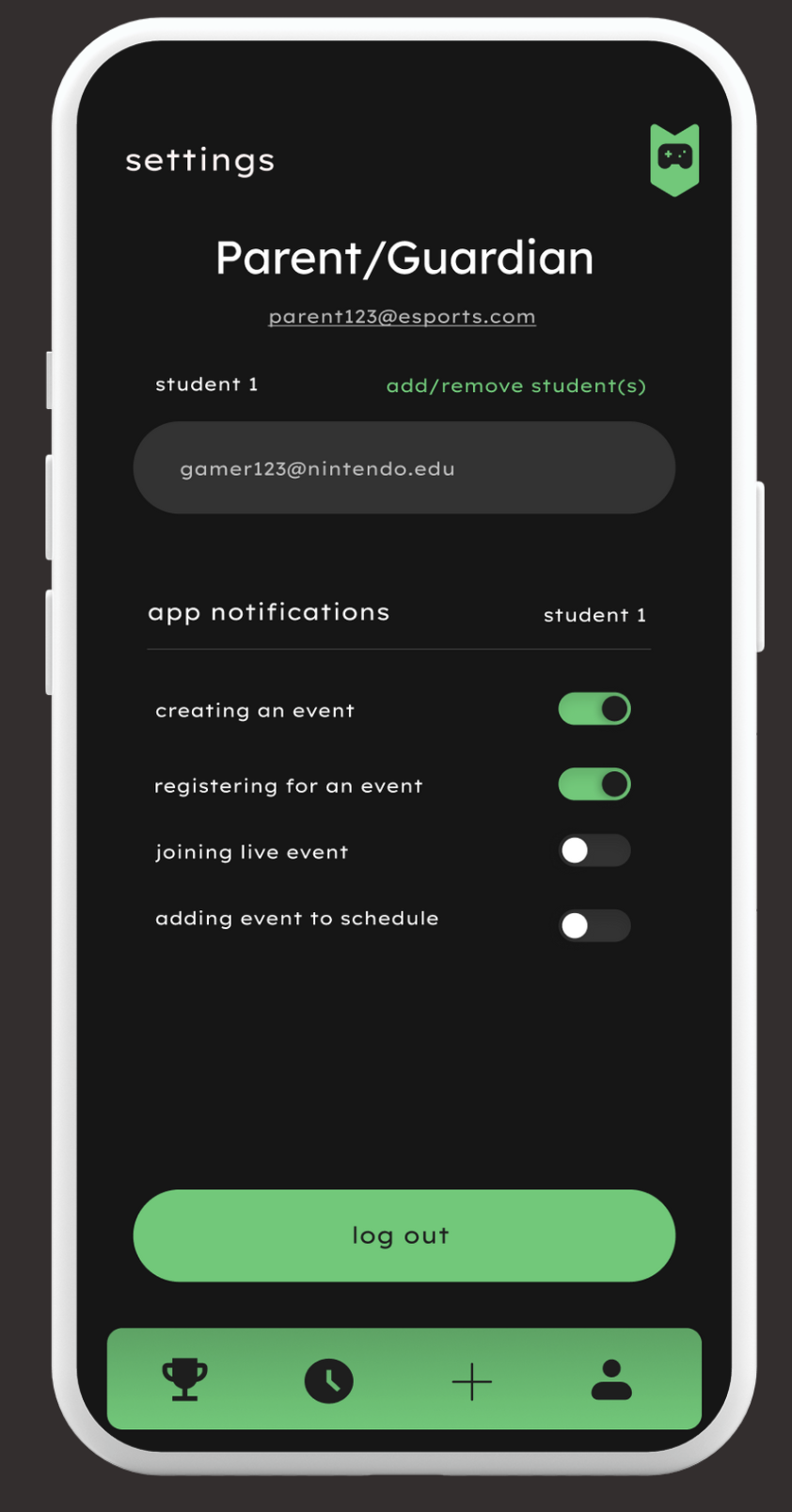
Parental Controls
As a key feature for this age group, I integrated parental controls to ensure safety while providing parents the ability to monitor and regulate their children’s gaming activities. This feature adds an extra layer of trust for parents while empowering young gamers to manage their schedules independently.
The research uncovered critical insights regarding social connection, safety, and personalization, which directly influenced design decisions.
Connection is Key
Participants emphasized the importance of social interaction in gaming. Geoff Thibault (20) and Kendra Smith (21) both noted that human connection is a core driver for online gaming. 100% of participants expressed a desire for social features such as chat rooms, friend lists, and activity statuses to be integrated into the app.
Safety Concerns
Safety was a top priority, especially for younger users. *Matt Wong* (23) pointed out that the app could offer a safer environment than current platforms like Discord or Twitch. 80% of participants (16 out of 20) raised concerns about the lack of safety controls on existing platforms and highlighted the need for moderation tools to protect K-12 students in the gaming community.
Need for Personalization
Participants, including David Skylar (19), requested more ways to personalize their experience. 75% of participants (15 out of 20) wanted customizable profile statistics (like win-loss ratios) and event discovery filters by genre, skill level, and time slot, to better match their specific gaming needs.
100% of participants wanted social features integrated into the platform.
80% expressed safety concerns about current public platforms.
75% wanted more personalized profiles and event discovery options.
The names mentioned are pseudonyms to protect the identity of the research participants.
New Additions and Insights
Improved calendar contrast for better event visibility (20% of users reported this issue).
Personalized feed based on gaming preferences (70% of users requested this).
Added friend activity page and safe social features (100% of participants wanted these).
Implemented customizable event discovery filters (80% of participants requested this).
-
To address usability concerns, the calendar's color contrast was enhanced, improving the visibility of scheduled events. This change was made based on feedback from 20% of participants who reported difficulty seeing events on the monthly calendar view.
-
A personalized feed was implemented, allowing users to filter content by genre, skill level, and gaming interests. 70% of participants (14 out of 20) requested this feature to enhance browsing and event discovery.
-
A Friend Activity Page was added, as suggested by 60% of participants (12 out of 20), allowing users to track their friends' activities. A safe social networking section was also integrated, with chat rooms, activity statuses, and moderation tools, which 100% of participants indicated as essential for younger gamers.
-
To make event discovery more relevant, we added filters for genre, skill level, and time. This feature was requested by 80% of participants (16 out of 20) who wanted more specific search options for events.




